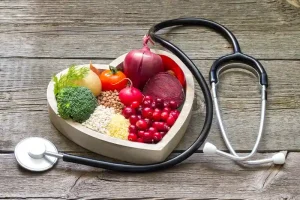
This equates to 12 fluid ounces of beer, five fluid ounces of wine, or 1.5 fluid ounces of distilled spirits, which are 80-proof. In fact, over the long term, Blacks appear more prone to BP elevations than Whites or Asians. In one study, the risk for high BP among men increased by a fifth with 1-2 drinks but by half and three-fourths with 3-4 and 5 or more drinks a day. Women failed to show an increased risk at low dosages, but above two drinks a day, they had a 42% increase in risk.
- We classified the remaining studies as having high risk of bias because the protocol was not registered and the study identifier was not reported.
- However, higher doses or consumption beyond thirteen hours can reverse this effect, leading to elevated blood pressure levels.
- Swapping some of your usual alcoholic drinks for a tasty non-alcoholic option is an easy way to cut back.
- Our writers include physicians, pharmacists, and registered nurses with firsthand clinical experience.
- Despite this finding, women should try not to engage in binge drinking.
Abu‐AmshaCaccetta 2001 published data only

Many interrelated changes are possibly responsible for the biphasic effect of alcohol on blood pressure. In the case of performance bias, we classified six studies as having low risk can alcohol lower blood pressure of bias, 19 studies as having high risk of bias, and seven studies as having unclear risk of bias. All outcomes of interest in the review (BP and HR) produced continuous data.
Marczinski 2018 published data only

Consuming alcohol can increase the risk of high blood pressure and other metabolic conditions in several ways. For example, alcohol can affect calcium levels, cortisol levels, and baroreceptor sensitivity, all of which can lead to increases in blood pressure. Completely refraining from consuming alcohol lowers the risk of some of the health risks listed above.

Overall completeness and applicability of evidence

Randomised controlled trials (RCTs) comparing effects of a single dose of alcohol versus placebo on blood pressure (BP) or heart rate (HR) in adults (≥ 18 years of age). A Dutch study showed that heart-healthy nutrients called polyphenols in red wine help prevent heart disease, but not because of a drop in blood pressure. Research shows that the polyphenols improve the cells lining the blood vessels, and do improve blood flow and heart health. The jury is still out, though, on whether this could potentially improve high blood pressure in severe cases.
Our levels of care include medical detox, inpatient rehabilitation and intensive outpatient programs (IOPs). No matter where you are in your recovery journey, our team https://ecosoberhouse.com/ will be there every step of the way. “Alcohol consumption might affect left ventricular diastolic properties, even in nonalcoholic patients,” say the researchers.
- High‐dose alcohol consumption increased HR by approximately 6 bpm in participants, and the effect lasted up to 12 hours.
- Researchers noted this effect varied depending on the type of tea a person drank.
- For example, some people who are on cholesterol-lowering medicines may experience muscle aches when they drink alcohol.
We most often used the reported endpoint SE/SD value to impute the SE/SD of MD. This is known to provide a good approximation of the SD of change in BP so is unlikely to lead to bias. Also, only 10 out of 32 studies reported changes in MAP after alcohol consumption along with SE/SD (Buckman 2015; Dumont 2010; Foppa 2002; Karatzi 2005; Karatzi 2013; Kojima 1993; Maufrais 2017; Maule 1993; Narkiewicz 2000; Van De Borne 1997).
Kawano 2002 published data only
- It also regulates metabolism, immune function, and inflammatory pathways.
- With moderate doses of alcohol, blood pressure (BP) went up for up to seven hours but normalized after that.
- “So even if they have high blood pressure, they could see the health benefit from something like a glass of red wine a day.”
In the case of detection bias, we classified nine studies as having low risk of performance bias (Agewall 2000; Bau 2005; Bau 2011; Cheyne 2004; Dai 2002; Karatzi 2013; Narkiewicz 2000; Rosito 1999; Van De Borne 1997). All studies included an independent individual who was blinded to control and test groups to evaluate and analyse the data. One study ‐ Nishiwaki 2017 (a single‐blinded study) ‐ ensured participant blinding but not blinding of outcome assessors.